white pine tree cartoon drawing leave
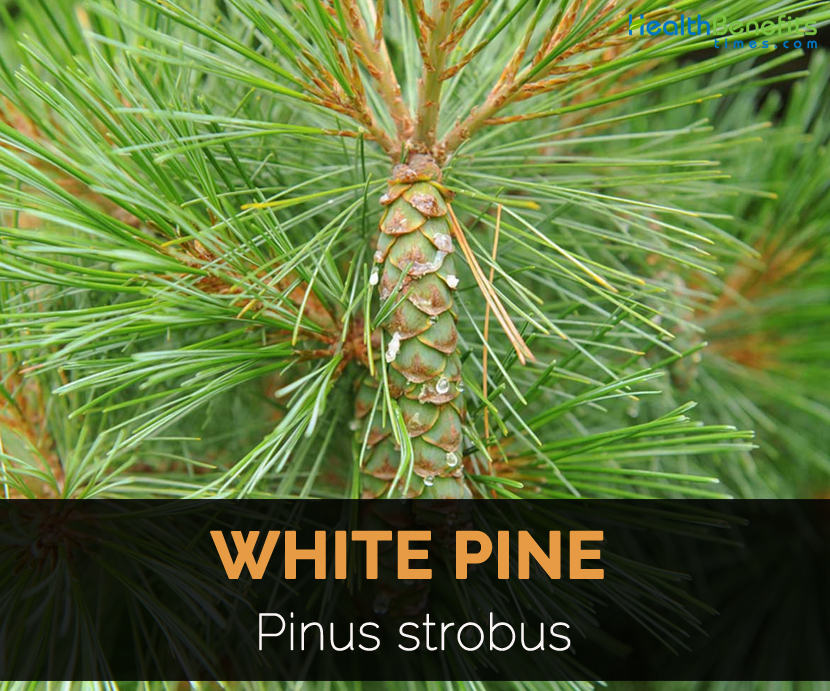
| White Pine Quick Facts | |
|---|---|
| Name: | White Pine |
| Scientific Name: | Pinus strobus |
| Colors | Brown |
| Shapes | Elongated, 6 to 12 inches |
Pine is the common name of the largest and economically most important genus (Pinus) of the pine family (Pinaceae) of the conifers (cone-bearing trees) in general. Of the ninety or more species of pines, thirty are native to North America, distributed from north of Mexico, eastern, northern and the western states.
The outstanding characteristics of the genus are mostly erect, much branched, twigs with long shoots with scaled leaves and dwarf branches bearing long needles surrounded by scaled leaves at the base; the leaves are either primary, solitary, scale-like, spirally arranged, and usually deciduous some weeks after their appearance. The unisexual flowers (cones, strobile) appear in the spring on the same tree. Conifers often produce twin trees resulting from the presence of more than one embryo in a single ovule. Traditionally the genus Pinus is subdivided into two main groups: (1) the soft pine, or white pines, and (2) the hard or yellow pines.
Needles
White pine is an evergreen species which bears thin needles growing in five clusters. It is helpful for identification if one remembers that the number of letter in "white" are five which equals to the number of needles in cluster. Typically needles grows between 2 ½ to 5 inches long.
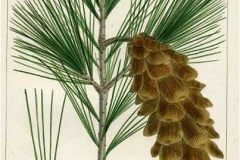 Plant-illustration-of-White-pine
Plant-illustration-of-White-pine
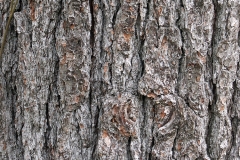 White-pine-bark
White-pine-bark
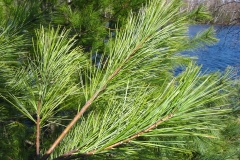 White-pine-leaves
White-pine-leaves
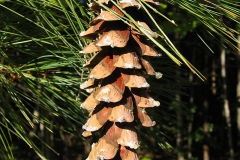 White-pine-mature-seed-cones
White-pine-mature-seed-cones
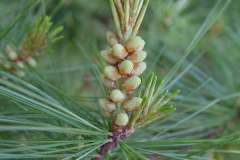 White-pine-pollen-cones
White-pine-pollen-cones
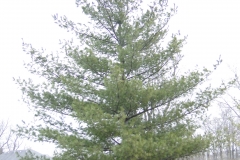 White-pine-tree
White-pine-tree
Bark
The bark of younger trees is thin and smooth. Mature trees have dark gray to brown bark which is fissures and shows ridges and deep indents.
Cones
White pines are monoecious which means each tree produces male and female cones. It occurs in the spring between May and June. Male cones have overlapping scales which opens to release pollen. Female cones measures 8 inches long and 1 inch in width. It is green in color and ripens to brown when seeds are mature and ready to be released into the wild.
Facts About White pine
| Name | White Pine |
|---|---|
| Scientific Name | Pinus strobus |
| Common/English Name | Soft Pine, Deal Pine |
| Name in Other Languages | Arabic: Sanawbar, Khashab 'azîzî, Sanawbar abyad amrîkî; Catalan: Pi de Weymouth, Pi blanc americà, Pi strobus, Pi blanc del Canadà; Chinese: Bei mei qiao song (北 美乔松), Bai song (白 松), xxx wu zhen song (美国五针松), Měiguó báisōng (美国白松); Czech: Borovice hedvábná, Borovice vejmutovka; Danish: Weymouths-Fyr; Dutch: Weymouth-den, Weymouthsden, Weymouthpijn; English: American white pine, Cork pine, Eastern white pine, New England pine, Northern white pine, Ottawa pine, Ottawa white pine, Pattern pine, Pumpkin-pine, Soft pine, Weymouth pine, White pine; Finnish: Strobusmänty, Weymouthmänty; French: Pin à aiguilles fines, Pin baliveau, Pin blanc de l'Est, Pin de Lord Weymouth, Pin de Weymouth, Pin blanc d'Amérique, Pin Weymouth; German: Büschelkiefer, Gemeine Weimutskiefer, Weymouthsföhre, Weymouthskiefer, Weymouths-Kiefer; Hungarian: Simafenyő, Weymouth fenyõ; Icelandic: Vætufura, Weymouthfura; Italian: Pino di Weymouth, Pino bianco, Pino strobo; Japanese: Sutoroobu matsu (ス トローブマツ), Sutoroobusu matsu (ストローブスマツ); Norwegian: Weymouthfuru; Polish: Sosna Amerykańska, Sosna wejmutka; Portuguese: Pinheiro-do-lorde, Pinheiro-de-Weymouth, Pinheiro-branco-do-Canadá; Russian: Sosna veimutova (Сосна веймутова); Slovakian: Borovica hladká; Spanish: Pimobete blanco, Pino blanco americano, Pino de Quebec, Pino de Weymouth; Swedish: Ostlig vittall, Weymouthtall; Turkish: Beyaz çam fıstık ağacı |
| Growing Climate | Cool, humid |
| Soil | Well-drained |
| Bark | Gray-brown, deeply furrowed |
| Leaf | Spreading to ascending, 6-10 cm x 0.7-1 mm |
| Buds | Ovoid-cylindric, light red-brown, 0.4-0.5 cm |
| Fruit shape & size | Elongated, 6 to 12 inches |
| Fruit color | Brown |
| Seed | Compressed, broadly obliquely obovoid, 5-6 mm |
| Medicinal parts | Inner bark or sprigs |
Uses
The pine trees play an important part in the domestic life of the Indian. They use pine needles for sewing, resins as cement, and the nuts as food and decoration. The appealing use as medicine and food is, to us, the most outstanding. Pine nuts were made into a paste consistency and added to soups for infants and adults. They chewed the gum resin for sore throats; the same was also dried, powdered and applied to the throat with a swab. The resin and parts of some other plants such as small twigs of Juniper (Juniperus osteosperma) were used as a tea for colds, rheumatism, tuberculosis, influenza and chronic indigestion, kidney trouble, etc. The bark and new sprigs are useful as an expectorant, to modify quality and quantity of the mucus secretions and to favour its removal in bronchial and catarrhal trouble, rheumatism, scurvy, all chest affections, tonsilitis, laryngitis, croup and the like.
It is best to combine 1 teaspoonful of each of the following with 1 pint of water: Wild cherry bark (Prunus serotina), Sassafras (Laurus) and Spikenard (Aralia racemosa); steep ½ hr.; administer ½ teaspoonful to a mouthful every hour, depending on age and condition. Of use in diabetes with Uva ursi (Arctostaphylos), Marshmallow (Avthea) and Poplar bark (Populuas tremuloides). Prepare as above and take 3–4 cupfuls daily of the tincture, ½–1 fl dram.
Externally
The heated resin is used as a dressing to draw out imbedded splinters or to bring boils to a head; sores, cuts, swellings and insect bites also respond favourably. The hot resin can be spread on a hot cloth and applied as you would a mustard plaster for treating pneumonia, sciatic pains and any general muscular soreness.
Medicinal uses
- North American Indian tribes use it for antiseptic and vulnerary qualities.
- It is used for treating skin complaints, burns, wounds and boils.
- It is used to treat coughs, influenza, colds and others.
- Use it internally as a rub or steam bath for treating rheumatic affections.
- The poultice of pitch is used to draw out toxins from boils and lower pain.
- An infusion is used for treating colds and as an ingredient in commercial cough syrups for promoting expulsion of phlegm.
- Use the pounded inner bark for treating cuts, sores and wounds.
- Use the wetted inner bark as a poultice on chest for treating strong colds.
- The infusion of young twigs is used for treating kidney disorders and pulmonary complaints.
- Use the powdered wood as a dressing on baby's chaffed skin, improperly healed navels and sores.
- Tea prepared from young needles is used for treating sore throats.
Culinary uses
- Seeds are consumed raw or cooked.
- Use the seeds to flavor cooking.
- Brew the fresh needles into an aromatic tea.
- Boil the tender new shoots in syrup to make a candy.
- Sticky amber sap is used for chewing.
- Use it as a thickener in soups or add it to cereals for making bread.
Precautions
- Resins, wood and sawdust can cause dermatitis in sensitive people.
- Allergic people should avoid it.
- People with asthma or bronchitis should avoid it.
References:
https://www.itis.gov/servlet/SingleRpt/SingleRpt?search_topic=TSN&search_value=183385#null
http://www.hear.org/pier/species/pinus_strobus.htm
https://pfaf.org/user/Plant.aspx?LatinName=Pinus+strobus
http://hort.ufl.edu/database/documents/pdf/tree_fact_sheets/pinstrd.pdf
https://extension.umaine.edu/signs-of-the-seasons/wp-content/uploads/sites/6/2014/08/White-Pine_Fact-Sheet.pdf
http://www.naturalmedicinalherbs.net/herbs/p/pinus-strobus=white-pine.php
http://www.muskegoncc.edu/Include/Life%20Science/Kasey%20Hartz%20Nature%20Trail/Reference%20Sheets%20KHNA/Pinus_strobus.pdf
https://pfaf.org/user/Plant.aspx?LatinName=Pinus+Strobus
http://www.euforgen.org/species/pinus-strobus/
Comments
Source: https://www.healthbenefitstimes.com/white-pine/
0 Response to "white pine tree cartoon drawing leave"
Post a Comment